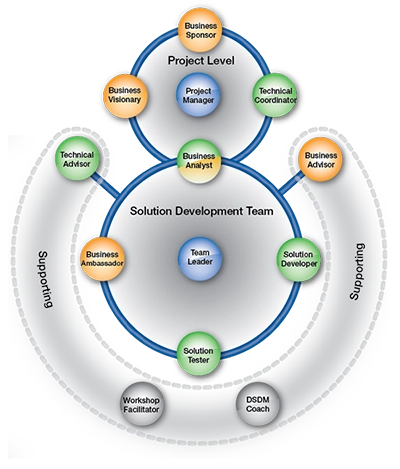Publised On:May 03, 2021

Update (11 December 2024):
This article was written in 2021 with Agile Project Management (AgilePM) V2 as baseline. In October 2024, Agile Business Consortium announced the launch of Agile Project Management V3 (AgilePM3). Though parts of the article below are still relevant, the topics covered may not be referring to the latest guidance on Agile Project Management.
Agile’s influence on project, programme and change management continues to rise at pace. Agile Project Management (AgilePM) guidance offers a practical, scalable and repeatable methodology that achieves an ideal balance between the standards, rigour and visibility required for good project management, and the fast-pace, change and empowerment provided by agile.
The success of a project is ultimately in the hands of the individuals involved in the project (who eventually form teams to support the delivery of work).
In an Agile project this is even more important since collaboration and empowerment are at the heart of DSDM based Agile Project Management (AgilePM) framework.
Agile Project Management (AgilePM) defines following core roles:
Agile Project Management (AgilePM®) Handbook defines these roles in sufficient detail.
Visit Tecknologia to learn more about Agile Project Management (AgilePM®) and how to achieve certifications for Agile Project Management (AgilePM).
Credit: Agile Business Consortium and APMG International.
Quick Links
Popular Courses
Latest News and Blog
Tecknologia is thrilled to announce our APMG International accreditation for delivering top-notch Artificial Intelligence (AI) Practitioner certification courses.
Agile Project Management (AgilePM®) is the world’s first and the best framework for managing projects using agile tools, techniques and practices. Recently released v3 of AgilePM has Scrum at the core of it, providing the unbeatable combination. &
APMG International Change Management, AgilePM®,AgilePgM® and AgileBA®, AgilePM for Scrum, ABC Scrum Master, ABC Product Owner and the associated Swirl Device logos are all trademarks of the APM Group limited, used under permission of the APM Group Limited. All rights reserved. APMG is the owner of the Accredited Consulting Organisation and Registered Consultant scheme. ITIL®, P3O®, MoP®, M_o_R®, MoV®, PRINCE2®, PRINCE2 Agile® and MSP® are registered trade marks of AXELOS Limited, used under permission of AXELOS Limited. All rights reserved. The Swirl logo™ is a trade mark of AXELOS Limited, used under permission of AXELOS Limited. All rights reserved.
Copyright ©
2026 All Rights Reserved.